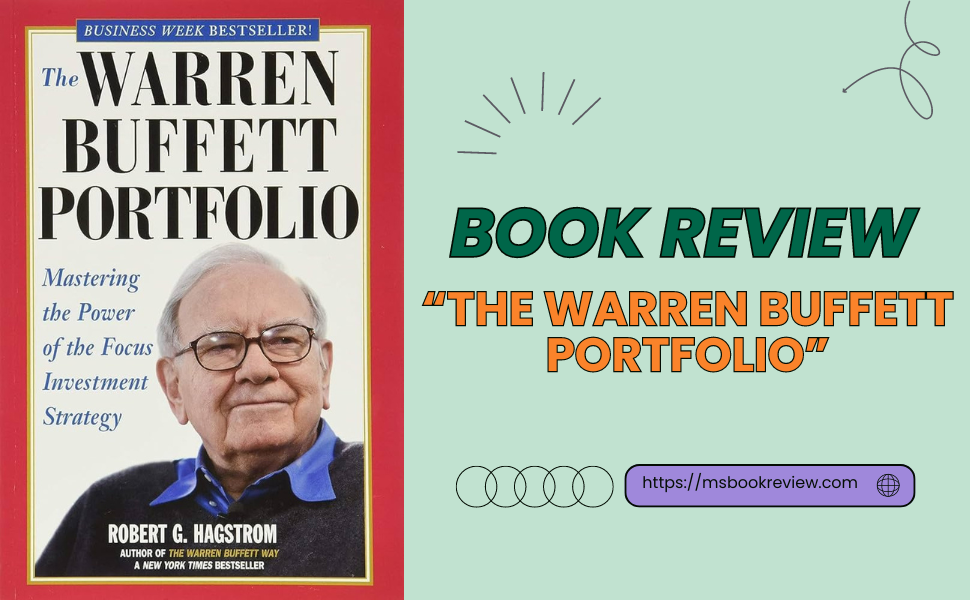Msbookreview.com, in investing, finding a strategy that consistently outperforms the market can feel like searching for a needle in a haystack. However, Beating the Street by Peter Lynch provides a practical and insightful guide to achieving just that.
This book is a must-read for anyone looking to gain an edge in the stock market, whether you’re a seasoned investor or just getting started.
Peter Lynch, one of the most successful mutual fund managers of all time, shares his proven strategies and offers a glimpse into how he consistently beat the market during his tenure at the Fidelity Magellan Fund.
Table of Contents
ToggleAuthor of Beating the Street
Peter Lynch, the author of Beating the Street, is a legendary figure in finance. Best known for managing the Fidelity Magellan Fund from 1977 to 1990, Peter Lynch achieved an average annual return of 29.2%, making the fund one of the best-performing mutual funds in history.
Peter Lynch’s investment philosophy, characterized by his mantra to invest in what you know, has made him a household name among investors.
In Beating the Street, Peter Lynch takes readers behind the scenes of his investment process, sharing the methods and principles that guided his success.
Synopsis of Beating the Street

Beating the Street is both an autobiography and an investment guide. In the book, Peter Lynch recounts his experiences managing the Fidelity Magellan Fund, offering readers a detailed look at how he selected stocks and built a winning portfolio.
The book is divided into several sections, each focusing on Peter Lynch’s investment strategy.
The first part of the book provides an overview of Peter Lynch’s early career and his rise to prominence at Fidelity.
He shares anecdotes and lessons learned from his time in the industry, providing valuable insights into the mindset and work ethic required to succeed in investing.
The book’s heart lies in Lynch’s discussion of his stock-picking strategies. He explains how he identifies potential investments by focusing on companies he understands with solid fundamentals.
Peter Lynch categorizes stocks into six types: slow growers, stalwarts, fast growers, cyclical, asset plays, and turnarounds, and he explains how to evaluate each type to determine its investment potential.
In addition to stock selection, Peter Lynch also covers the importance of building a diversified portfolio, managing risk, and knowing when to buy and sell stocks. He emphasizes the need for patience, discipline, and a long-term perspective in investing.
Throughout the book, Peter Lynch uses real-world examples from his time at Fidelity to illustrate his points. He discusses specific stocks and industries, explaining why he chose to invest in them and how those investments performed over time.
Advantages of Beating the Street
One of Beating the Street is its practicality. Peter Lynch’s investment strategies are grounded in common sense and personal experience, making them accessible and easily understood.
His advice to invest in what you know encourages readers to use their everyday observations and knowledge as a starting point for stock research, making selecting stocks more intuitive.
Another advantage of the book is Peter Lynch’s ability to demystify the stock market. He breaks down complex financial concepts into simple, relatable terms, making the book suitable for novice and experienced investors.
Peter Lynch’s emphasis on the importance of researching and not relying solely on market trends or expert opinions is a valuable lesson for anyone looking to succeed in the stock market.
Another highlight is the book’s real-world examples. Peter Lynch’s discussions of specific stocks and industries provide readers with concrete examples of how his investment strategies have been applied in practice.
These examples not only illustrate the principles he discusses but also inspire readers to apply the same strategies in their own investing.
Disadvantages of Beating the Street
While Beating the Street is an excellent resource for individual investors, it has limitations. One potential drawback is that the book could be more modern.
Initially published in 1993, some examples and references may need to be updated, especially for younger readers or those new to the stock market.
However, the core principles of Peter Lynch’s investment philosophy remain relevant, even in today’s market.
Another limitation is that the book’s focus on individual stock picking may only resonate with some investors.
Those who prefer a more passive investing approach, such as index fund investing, may find some of Peter Lynch’s advice less applicable to their strategy.
Additionally, Peter Lynch’s emphasis on individual research and stock selection may be overwhelming for readers who do not have the time or interest to dedicate to such activities.
Lastly, while Peter Lynch’s writing is engaging and accessible, some readers may find that the book lacks the depth and rigor of more technical investing texts.
Beating the Street may serve better as a starting point rather than a comprehensive guide for those looking for a deep dive into financial analysis or more advanced investment strategies.
Personal Opinion about Beating the Street
As someone who read this book, I have a personal opinion about it. Beating the Street is an invaluable resource for individual investors.
Peter Lynch’s practical, common-sense stock investing approach is empowering and educational. His ability to explain financial concepts in simple terms and provide actionable advice is a testament to his skill as an investor and a writer.
What I appreciate most about the book is its accessibility. Peter Lynch’s advice to invest in what you know resonates with readers personally, making the stock market feel less abstract and more connected to everyday life.
Using real-world examples from his time at Fidelity adds depth and credibility to the strategies he presents.
However, the book’s age and focus on stock picking may appeal to some; for those who prefer a more passive or modern approach to investing, Beating the Street may be less relevant.
That said, the book offers valuable insights that can benefit any investor, regardless of their preferred strategy.
Moral Message of Beating the Street
The moral message of Beating the Street is that individual investors have the power to succeed in the stock market by leveraging their knowledge and experiences.
Peter Lynch emphasizes that you don’t need a professional investor to achieve great results. By staying patient, disciplined, and focused on the fundamentals, anyone can make intelligent investment decisions and build long-term wealth.
Peter Lynch also underscores the importance of researching and not unthinkingly following the crowd. He encourages readers to think critically, trust their instincts, and have the confidence to invest in what they believe in.
This message of empowerment and self-reliance is central to Lynch’s investment philosophy and is a crucial takeaway from the book.
Conclusion
Beating the Street by Peter Lynch is a timeless classic in investing literature. Whether you’re a novice or an experienced investor, Peter Lynch’s practical advice and relatable writing style make this book an invaluable resource.
While the book’s focus on individual stock picking may not be for everyone, its core message of empowerment and common-sense investing is relevant to all.
As you explore the pages of Beating the Street, you’ll better understand how to approach the stock market with confidence and success.
Peter Lynch’s insights offer a fresh perspective on finding winning investments and building a portfolio that reflects your unique knowledge and experiences in a world where investing can often seem overwhelming.
Beating the Street provides a roadmap for making intelligent, informed decisions that can lead to long-term financial success.











